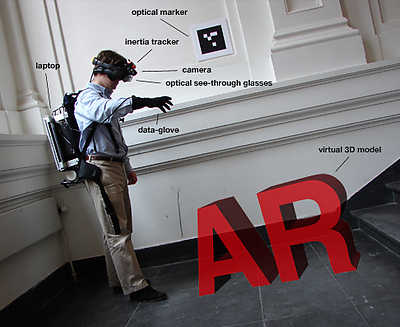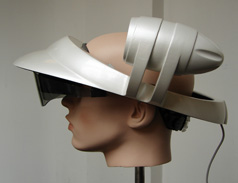academy
academy
AR+RFID Lab
Augmented Reality
The Augmented Reality (AR) headset allows us to see virtual images within our own view of the world. The headset is optically transparent: this means we still see the world around us as it really is, but it contains objects others can’t see! Objects that normally exist only on the computer screen are projected into the real world.
During Club Real #4 the headset allowed visitors to experience for themselves what it’s like to see the virtual world directly around them. A computer with a webcam was present in the exhibition room during the rest of the programme. On the screen, you’ll see the table and your own hands. When you hold up an optical marker (a black card with white blocks on it), virtual objects will appear. You can hold them in your hand, but they’re only visible in AR.
The optical markers are read using Radio Frequency Identification (RFID), an automatic, wireless identification method that uses elements called tags and transponders. An RFID tag – a successor to the barcode – is an object that can be attached to or implanted in a product, animal or person for the purpose of identification using radio waves. RFID technology is normally used to trace large numbers of objects; here, it will be used to effect events in Augmented Reality. Real objects will thus affect the virtual world.
AR+RIFD Lab is a collaboration of the Royal Academy of Art in The Hague, Delft University of Technology, and various companies. Together, they are working on a variety of new Augmented Reality applications for exhibitions, art installations, interior design, the theatre, typography and photography.
www.arlab.nl

